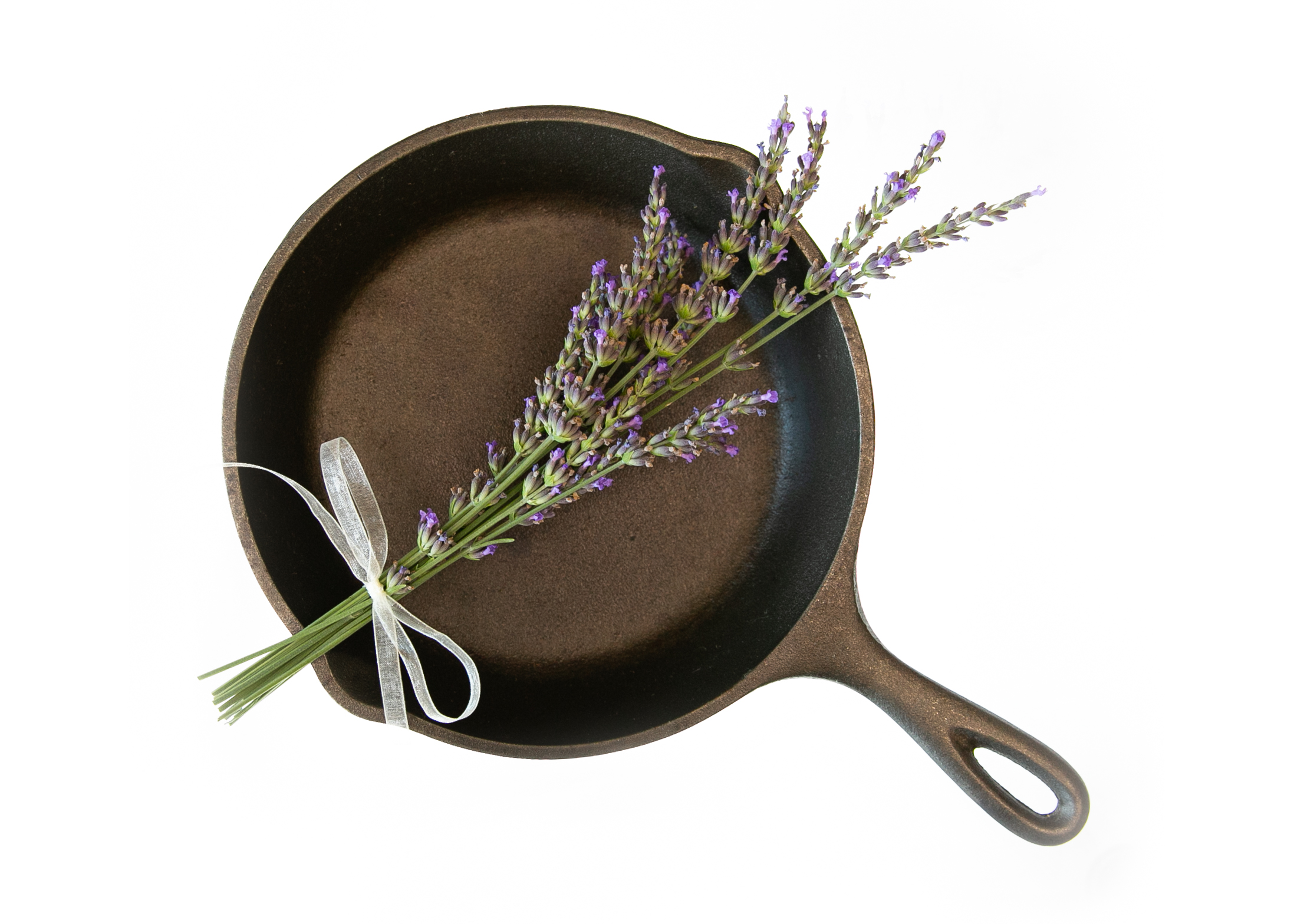How to Salvage Rusted Cast Iron
Totally kicking myself now because I missed out on photographing an easy DIY. This cast iron skillet was $5 at a garage sale and covered in rust. Would you have bought it anyway or thought it was too far gone?
I don’t plan on buying any more (yeah, right) but if I do, I’ll make sure to do a step-by-step.
*Heads up. This post may contain affiliate links. If you click one and make a purchase, I might make a small commission at no extra cost to you.
First, the Prep Work
Wear gloves, spray every inch with Easy Off Fume Free Oven Cleaner, let it sit in the sink for half an hour or so, and then scrub it with an abrasive sponge or steel wool pad. You can do a second coat if you need to, but if you’re able to scrub off all the rusty looking spots, then it’s probably good enough. Turn on your stove to around medium heat.
Wash the skillet thoroughly with soap and water and dry it off. Immediately put it on the stove to start heating up. Leave it for a couple of minutes to let it get hot and make sure it’s good and dry. Bone dry.
Now that the cast iron is bare, it’s going to start to rust. It happens fast and if it does, that’s alright.
Seasoning Your Cast Iron Cookware
Preheat your oven to 500 degrees. Yep, 500. Using paper towels or some kind of lint-free cloth, cover the entire pan in a very thin coating of a high-heat cooking oil. Careful not to burn yourself! I used coconut oil spray because it’s meant for medium-high heat. If any rust has started to form after washing, just rub it well with the oiled cloth and it will come right off.
Make sure there’s no oil pooling anywhere. Put it in the oven for about 15 minutes. Pull it back out and carefully give it another coating of oil. Back in the oven it goes. Repeat this 1 or 2 more times. If the pan starts smoking, pull it out of the oven and let it cool for a minute, then coat it in some more oil and put it back.
When oil is heated to a hot enough temperature for long enough, a chemical reaction occurs that creates a natural polymer that will protect the pan.
If after this process is complete and the pan is cool, there’s still some oily residue, that’s okay. Give it a wipe down and store it as-is. I’ve never had a pan with rancid oil on it. Sometimes the “polymer” doesn’t completely harden, but if it’s been heated, it shouldn’t go bad.
Maintain the Seasoning
When you use your skillet, clean it immediately. Don’t let food sit in it longer than it takes to eat the meal you cooked. Rinse it under hot water and scrub a little if you need to. Don’t ever use soap! That will break down the polymer and destroy all your hard work. It isn’t necessary! Put it on the hot stove to dry and that also sanitizes it. Just make sure you don’t walk away and forget it’s there. I’ve never done that. Nope, never. Ahem.
The first few times you use your pan, you’ll want to clean it, give it a thin coat of oil and let it get hot on the stove again. Then let it cool and store it. Once you get a good seasoning (that’s what it’s called when you build up the oil/polymer) on your pan, you’ll just need to do this once in a while to maintain it. Even though my cast iron pans have a good protective coating on them, I still do this almost every time I use them. It isn’t necessary on a well seasoned pan, but it’s never a bad idea and only makes them better.
I hope this has been helpful!
Have a great day!
Let’s stay in touch! Follow me on Facebook, Instagram and Pinterest!


